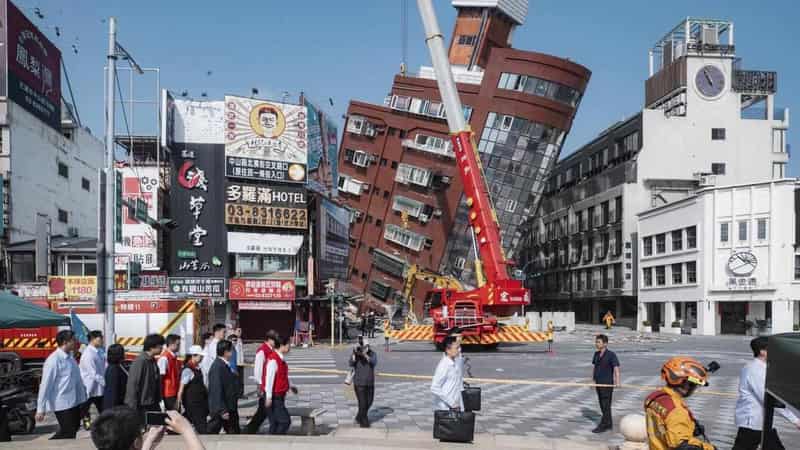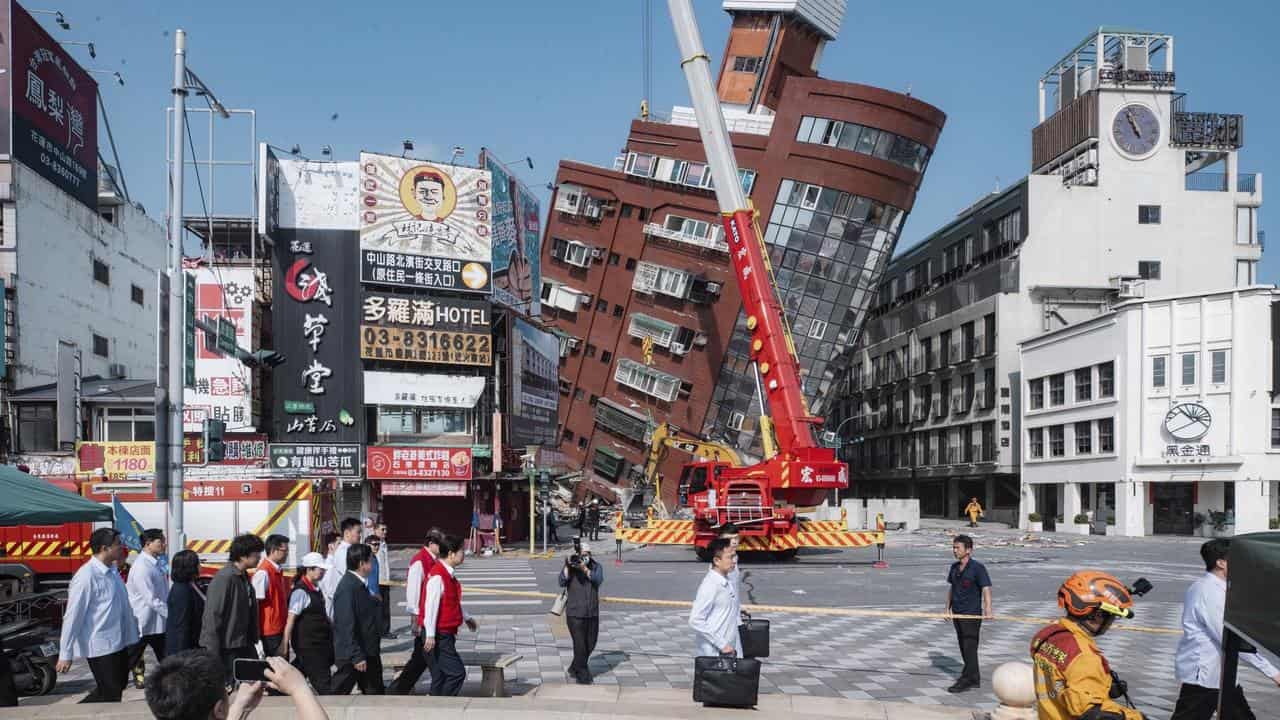
A helicopter has plucked to safety six people stranded in a mining area after Taiwan's worst earthquake in 25 years, while hundreds of aftershocks rocking the eastern region near its epicentre drove scores more to seek shelter outdoors.
The death toll from Wednesday's 7.2-magnitude quake rose to 10, with the tally of injured at 1067, authorities said on Thursday, while most of the roughly 50 hotel workers marooned on a highway as they headed to a resort in Taroko National Park were located.
But 660 people were still trapped, most of them in hotels in the park, after the road was cut off, the fire department said, as the discovery of a dead body on a hiking trail near the entrance to a gorge took the total deaths to ten.
A helicopter ferried to safety six miners trapped on a cliff in a dramatic rescue after the quake cut off the roads into Hualien's soaring mountains, in footage shown by the department.
The agriculture ministry urged people to keep away from the mountains because of the risk of falling rocks and the formation of "barrier lakes" as water pools behind unstable debris.
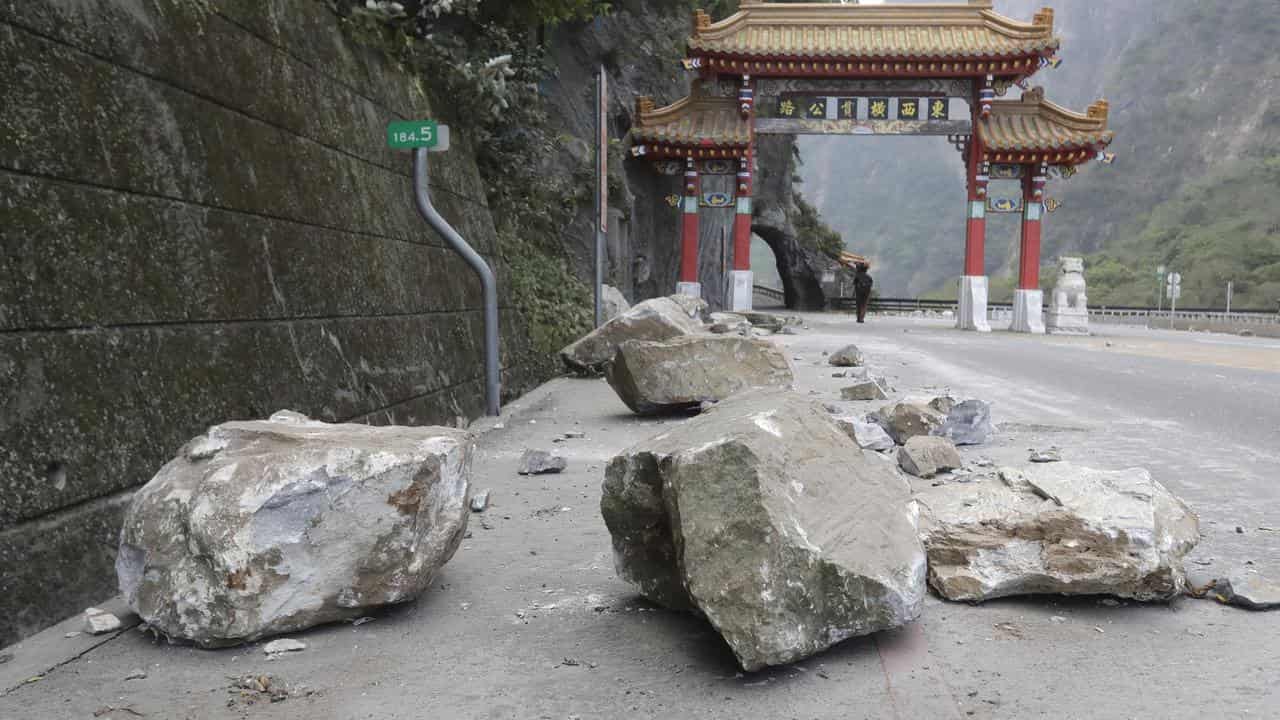
Thursday was the start of a long-weekend holiday for the tomb-sweeping festival, when families traditionally return home to attend to ancestral graves, though others will also visit tourist attractions.
People in largely rural and sparsely populated Hualien county were readying to go to work and school when the earthquake struck offshore on Wednesday.
Buildings also shuddered violently in Taipei, but the capital suffered minimal damage and disruption.
All those trapped in buildings in the worst-hit city of Hualien have been rescued, but many residents unnerved by more than 300 aftershocks spent the night outdoors.
"The aftershocks were terrifying," said Yu, a 52-year-old woman, who gave only her family name. "It's non-stop. I do not dare to sleep in the house."
Too scared to return to her apartment, which she described as being in a "mess", she slept in a tent on a sports ground being used for temporary shelter.
Dozens of residents queued outside one badly damaged 10-storey building, waiting to go in and retrieve belongings.
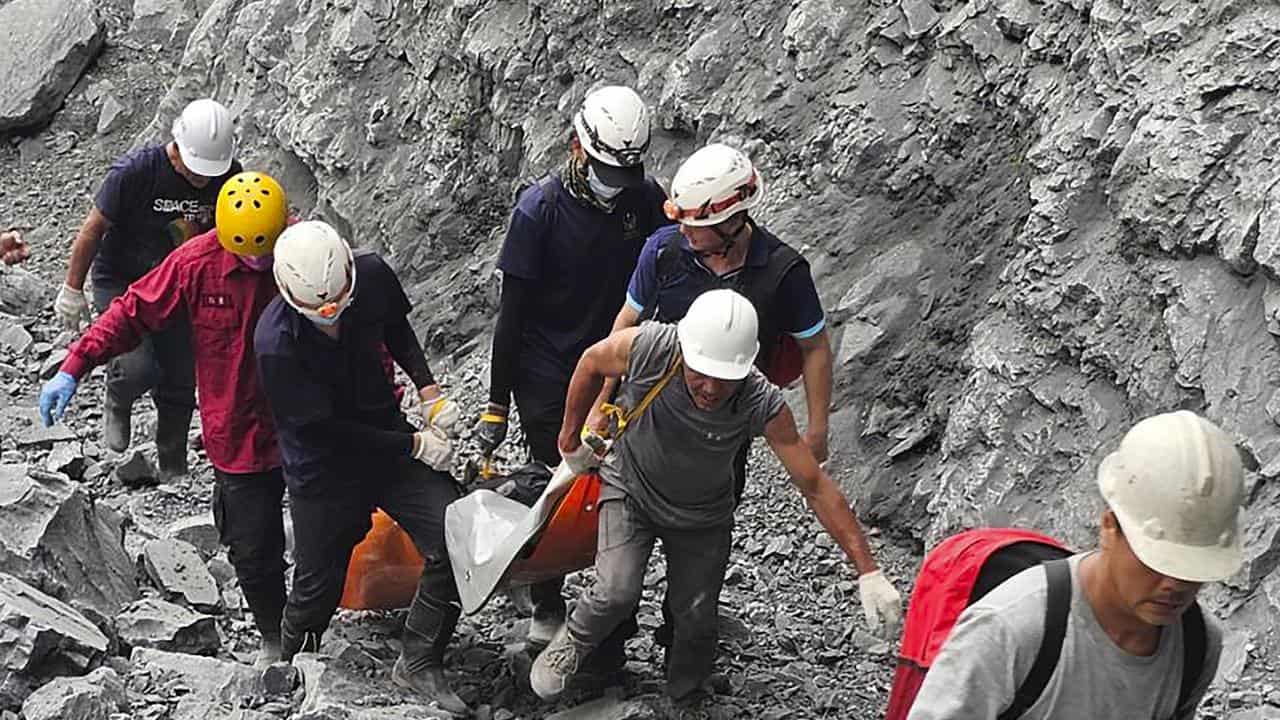
Clad in helmets and accompanied by government personnel, each was given 10 minutes to collect valuables in huge garbage bags, though some saved time by throwing items out of windows into the street below.
"This building is no longer liveable," said Tian Liang-si, who lived on the fifth floor, as she scrambled to gather her laptop, family photographs and other crucial items.
She recalled the moment the quake struck, sending the building lurching and furniture sliding, while she rushed to save the four puppies she keeps as pets.
"I'm a Hualien native," she told Reuters. "I'm not supposed to fear earthquakes. But this is an earthquake that frightened us."
The quake hit at a depth of 15.5km just as people were headed for work and school.
Video showed rescuers using ladders to help trapped people out of windows.
Strong tremors in Taipei forced the subway system to close briefly, although most lines resumed service on Thursday.
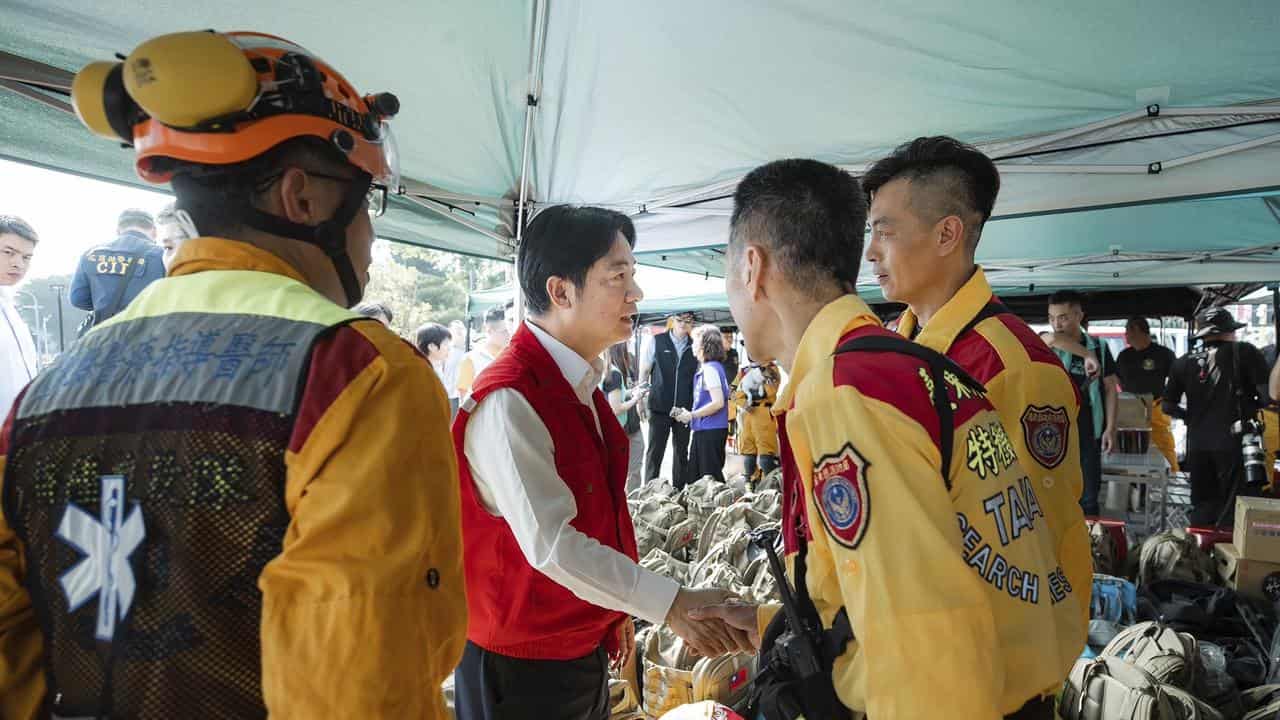
President-elect Lai Ching-te told reporters that the government's top priority was "to rescue people".
Chinese state media said the quake was felt in the southeastern province of Fujian while a Reuters witness said it was also felt in the commercial hub of Shanghai.
Aftershocks could still be felt in Taipei, with more than 50 recorded, weather officials said.
Most power has been restored after the quake, electricity utility Taipower said, with the island's two nuclear power stations unaffected.
The official Central News Agency said the quake was the biggest since one of magnitude 7.6 in 1999 that killed about 2400 people and damaged or destroyed 50,000 buildings.
Taiwan weather officials ranked Wednesday's quake in Hualien as "Upper 6", or the second-highest level of intensity on a scale ranging from 1 to 7.
Such quakes collapse walls unless they are made of reinforced concrete blocks while people cannot stand upright and must crawl in order to move, experts say.
